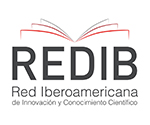The Development History, Characteristics and Trend of Chinese Education in Romania
DOI:
https://doi.org/10.18002/sin.v16i1.7679Keywords:
Romania; Chinese education; development history; development characteristics; development trend.Abstract
Throughout sixty years of development, the history of Chinese education in Romania has roughly experienced four stages: the embryonic stage (before 1956), the slow development stage (1956-2005), the rapid development stage (2006-2016), and the in-depth development stage (since 2017). Based on reviewing its development history, this paper provides important information concerning the most significant events, institutions, sinologists, textbooks, and monographs about Chinese education in different periods. From a diachronic perspective, sinology research in Romania on the one hand and language services and policy support from China on the other hand are two crucial factors that have contributed to the development of Chinese language education in Romania; from a synchronic perspective, Romanian Chinese education has built a complete talent training system for undergraduate, master, and Ph.D. However, the development of various universities is uneven; the Confucius Institute is the leading force in Chinese education in primary and secondary schools. The learners of Chinese are of different ages, and the evolution trend focuses on the young ones. The development trend of Chinese education in the new era should focus on localization.
Downloads
Métricas alternativas

Downloads
Published
Versions
- 2024-03-06 (4)
- 2024-02-15 (3)
- 2024-02-15 (2)
- 2023-05-28 (1)
How to Cite
Issue
Section
License

This work is licensed under a Creative Commons Attribution-NonCommercial-ShareAlike 4.0 International License.
Sinología Hispánica. China Studies Review considers all manuscripts on the strict condition that:
- The authors assign the exploitation rights (reproduction, distribution, public communication and transformation) of the work accepted for publication to the University of León on a non-exclusive basis. Authors can establish, on their own, additional agreements for the non-exclusive distribution of the version of the work published in the journal (for example, placing it in an institutional repository or publishing it in a book), always acknowledging the initial publication. in this magazine.
- The manuscript is your own original work and does not duplicate any other previously published work, including your own previously published work.
- The manuscript is not currently under consideration or peer review, nor accepted for publication, nor in press, nor published elsewhere.
- The manuscript contains nothing that is abusive, defamatory, libellous, obscene, fraudulent, or illegal.
- Please note that Sinologia Hispanica uses Turnitin software to screen manuscripts for unoriginal material. By submitting your manuscript to Sinologia Hispanica you are agreeing to any necessary originality checks your manuscript may have to undergo during the peer-review and production processes. Any author who fails to adhere to the above conditions will be rejected.
- Authors are allowed and encouraged to electronically disseminate the pre-printed versions (version before being evaluated) and / or post-printing (version evaluated and accepted for publication) of their works before publication, since it favors their circulation and dissemination more early and with it, a possible increase in its citation and reach among the academic community.
Sinologia Hispanica is under an international license Creative Commons Attribution-Noncommercial-Share Alike 4.0. You can read more about this license in an informative version and legal text.







